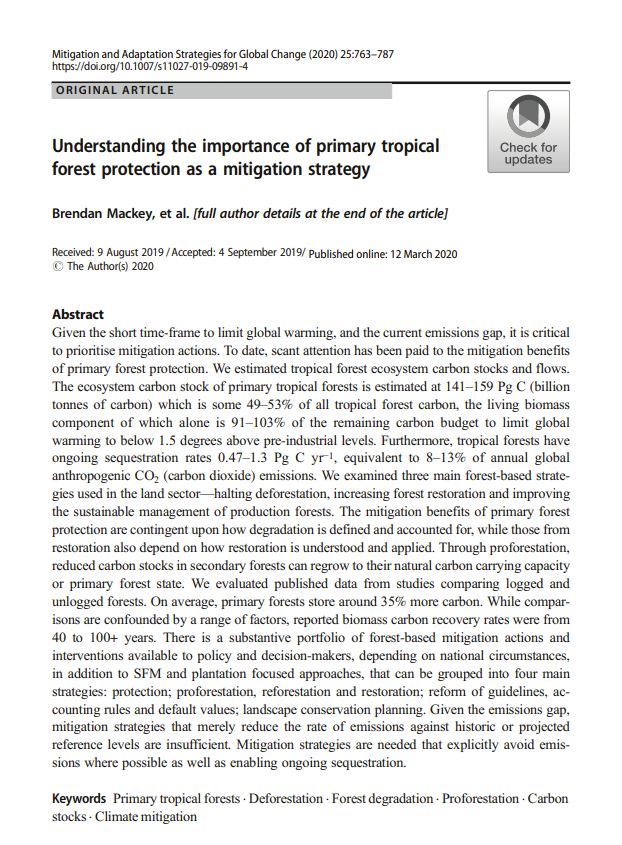Resource information
Given the short time-frame to limit global warming, and the current emissions gap, it is critical to prioritise mitigation actions. To date, scant attention has been paid to the mitigation benefits of primary forest protection. We estimated tropical forest ecosystem carbon stocks and flows. The ecosystem carbon stock of primary tropical forests is estimated at 141–159 Pg C (billion tonnes of carbon) which is some 49–53% of all tropical forest carbon, the living biomass component of which alone is 91–103% of the remaining carbon budget to limit global warming to below 1.5 degrees above pre-industrial levels. Furthermore, tropical forests have ongoing sequestration rates 0.47–1.3 Pg C yr−1, equivalent to 8–13% of annual global anthropogenic CO2 (carbon dioxide) emissions. We examined three main forest-based strategies used in the land sector—halting deforestation, increasing forest restoration and improving the sustainable management of production forests. The mitigation benefits of primary forest protection are contingent upon how degradation is defined and accounted for, while those from restoration also depend on how restoration is understood and applied. Through proforestation, reduced carbon stocks in secondary forests can regrow to their natural carbon carrying capacity or primary forest state. We evaluated published data from studies comparing logged and unlogged forests. On average, primary forests store around 35% more carbon. While comparisons are confounded by a range of factors, reported biomass carbon recovery rates were from 40 to 100+ years. There is a substantive portfolio of forest-based mitigation actions and interventions available to policy and decision-makers, depending on national circumstances, in addition to SFM and plantation focused approaches, that can be grouped into four main strategies: protection; proforestation, reforestation and restoration; reform of guidelines, accounting rules and default values; landscape conservation planning. Given the emissions gap, mitigation strategies that merely reduce the rate of emissions against historic or projected reference levels are insufficient. Mitigation strategies are needed that explicitly avoid emissions where possible as well as enabling ongoing sequestration.

